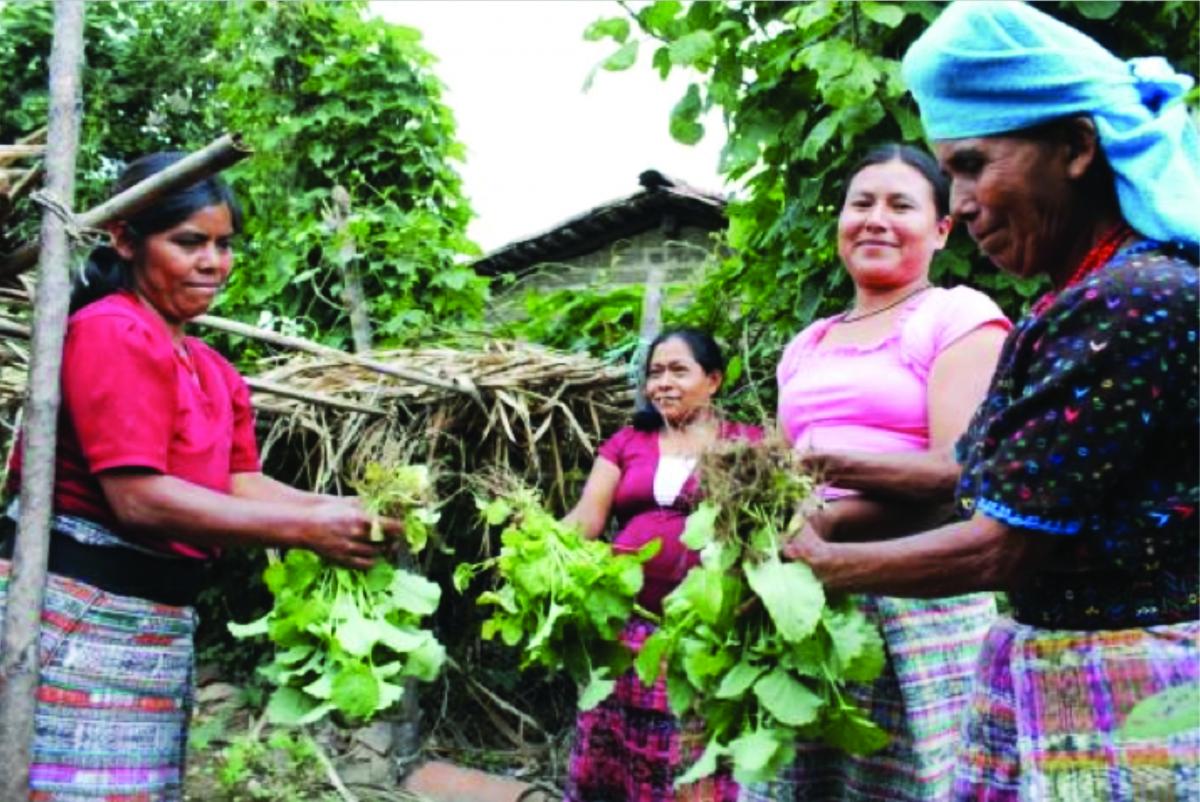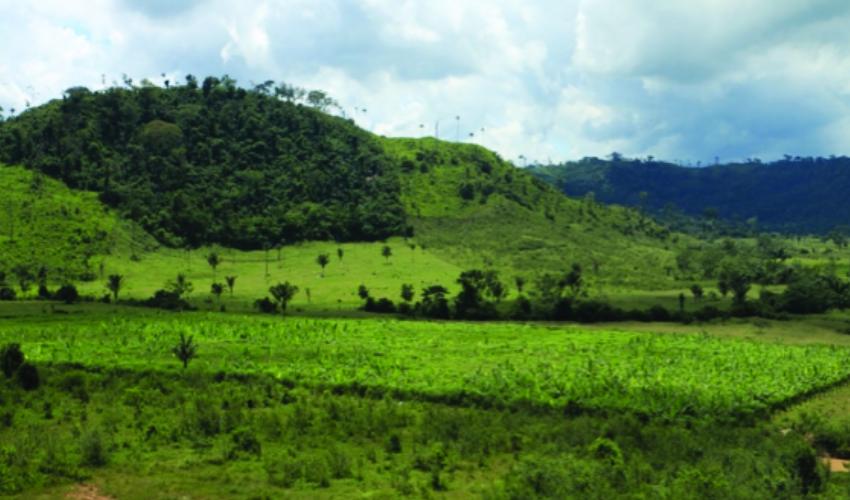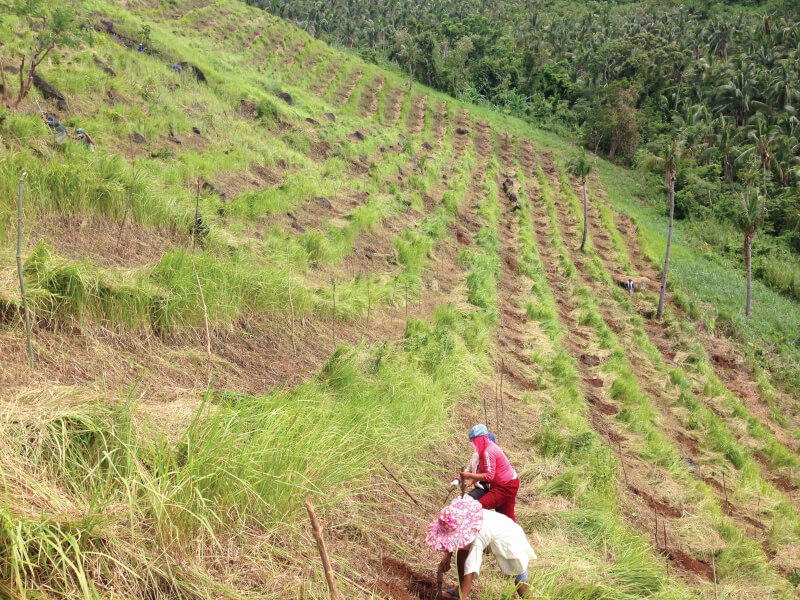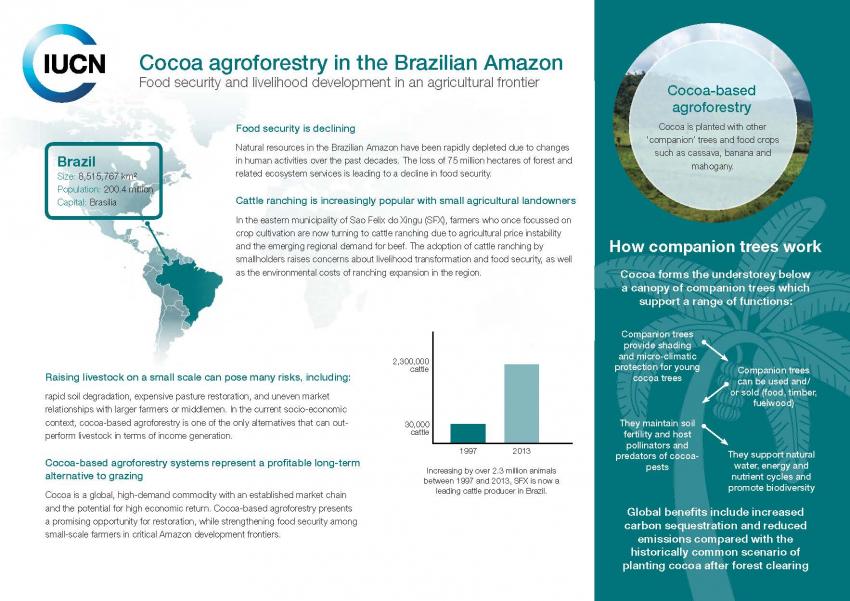How do we improve the sustainability of food production systems without clearing more forests and depleting ecosystems?
Climate change undermines the stability and resilience of our food production systems, and global responses cannot adequately address them in individual action plans. We need global actions focusing on local solutions that integrate sectors and at scales – capturing synergies and engaging people. Salome Begeladze, IUCN’s Forest Programme Officer on FLR and food security, explores these opportunities.

Photo: José Ramírez Maradiaga/FAO
The 43rd session of the Committee on World Food Security (CFS) recently held at FAO in Rome, Italy, hosted a series of debates that took stock of the scalable solutions addressing “Sustainable Agricultural Development for Food Security and Nutrition, including the Role of Livestock”. Recommendations emerging from the plenary discussions emphasised the importance of sustainable agriculture and livestock development for food security and nutrition, and promoting effective evidence-based policies in multistakeholder and cross-sectoral processes.
These are important discussions – we know livestock and agriculture are vulnerable to climate change, contribute to greenhouse gas (GHG) emissions, and put constant pressure on land, soil, water and biodiversity to meet the world’s rapidly evolving and changing food demand. However, the scope of these discussions was too narrow: leading up to CFS44 in 2017 and beyond, we must focus more on nature-based solutions (NbS) such as forest landscape restoration – which are key in building and maintaining the sustainable and resilient food systems and ecosystem services on which agricultural and livestock production relies.
NbS is an umbrella concept for several different ecosystem-related approaches, and it provides many entry points to address food security issues in the context of climate change. These solutions focus on the restoration, conservation and management of ecosystems to deliver services, helping stabilise food availability, access and use during periods of natural disaster; addressing the water, energy and food security nexus; and using forest landscape restoration (FLR) approaches to regain healthy landscapes.
Water, food and forests
 Photo: Valério Gomes
Photo: Valério Gomes
Due to more frequent droughts, the demand for water is increasing, but only 3% of the earth’s water is fresh water – and there are considerable challenges to how it is allocated, managed and conserved. An estimated 1.1 billion people worldwide lack access to clean, drinkable water, increasing their exposure to disease and malnutrition. Unpredictable rainfall patterns and limited-quality water supply systems result in low or failed crop production. Lack of water also decreases the ability of vegetation to effectively take up carbon dioxide for photosynthesis.
But the links between water and forests for food security are evident. Forested watersheds and wetlands supply 75% of the world’s accessible fresh water for household, agricultural and industrial use. Forests also have the ability to contribute to increased rainfall through evapotranspiration, they protect habitats, and help control erosion and flooding as they stabilise the land. Increasing the health of forested landscapes through FLR helps restore these key services for food production and resources. Of course, forests’ contribution to water quantity can vary depending on the environment and therefore forest restoration projects must be implemented carefully and strategically to maximize benefits across landscapes.
Carbon, food and forests
 Photo: Nestor Gregorio
Photo: Nestor Gregorio
Massive loss of forests and forest land degradation are evident across the world, 75% of which is attributable to agriculture. This deforestation for agricultural expansion comes with a hefty climate cost too: GHG emissions from deforestation and forest degradation account for 10-11% of total global emissions. The livestock sector is also a major GHG emitter. By 2050, according to FAO, global agriculture production will increase by 60% whereas the meat production will increase by 76%. Meeting this growing global demand for food, either through agricultural expansion or agricultural intensification, without taking environmental risks will be very challenging.
Reducing this current trend in deforestation and land degradation will require economic incentives, and changes in practices and policies that encourage preservation and conservation, and focus on the restoration of forest landscapes. This means changing management practices, adopting climate-smart restoration and management approaches and enhancing the resilience of the 1.6 billion people who depend on forests for employment, forest products and livelihoods.
This is where NbS options come in. We know that forests serve as natural storage for carbon and are essential in mitigating climate change, and furthermore, FLR is a sector where mitigation and adaptation approaches can be applied with benefits to both ecosystems and food scarcity issues. For example, agroforestry, one of the FLR interventions, has the potential to link mitigation and adaptation, and is suitable for degraded agricultural lands. It can bring back the biological productivity of the land by increasing soil fertility, enhancing water retention and improving crop productivity.
Tree-based agricultural systems provide both production and provisional services and are key to food security through supporting the availability, access and use of foods – both farmed and wild. FLR plays an important role in strengthening the stability of these food systems.
FLR for food security
 Photo: IUCN
Photo: IUCN
Last year, IUCN showcased the benefits of FLR for food security and land productivity in a compilation of case studies, Enhancing food security through forest landscape restoration. Now, these case studies are more easily accessible with a new series of factsheets highlighting each country’s experience.
In Burkina Faso, forests and tree resources play an important role in coping with food scarcity for the poorest households. Taking an FLR approach in areas where forest resources were depleted has reinvigorated the productivity of degraded land for agriculture and has generated new agroforestry parklands as a co-benefit, ranging from non-timber forest products used for food to non-edible forest products, fodder for livestock and crops including cereals and legumes.
As a result of rainfall irregularities, recurrent natural disasters, environmental degradation, inadequate agricultural infrastructure and poor agricultural policies, Guatemala has been experiencing high levels of food insecurity and malnutrition throughout the country. To preserve soil moisture during drought periods and to identify best practices for protecting the soil and crops from the erosive effects of rain, an agroforestry pilot project was adopted with an emphasis on gender and ancestral knowledge. The ancient and sustainable practice of planting dispersed trees of Gliricidia sepium within the plot of annual crops has proven to be a good initiative in improving food and nutritional security.
In the Brazilian Amazon, nearly 60% of the deforested area was converted into pasturelands, but the lack of proper livestock management practices resulted in degradation and abandonment of approximately 10 million hectares. To find ecological, economic and food security alternatives for small landholders, the restoration of degraded pastures has been implemented with cocoa (Theobroma cacao)-based agroforestry systems in São Félix do Xingu (SFX). This system generated significant environmental benefits as well as income from other initial crops, particularly cassava, maize, banana and other fruit-bearing shade trees. Because cocoa is a global, high-demanded commodity with an established market chain and the potential for high economic returns, it presents a promising opportunity for restoration while strengthening food security among small-scale farmers in critical Amazon development frontiers.
The restoration of communal areas has substantially improved the economic capacity of rural beneficiaries and helped ensure their food security in Ethiopia. This case demonstrates that institutionalising community-based natural resource management and investing in restoration interventions and their proper planning management are vital to achieving food security. Economically viable large-scale landscape restoration initiatives should be prioritised, especially when large-scale communal land holdings are widely available in the country.
Cocoa agroforestry has emerged as a promising land-use option to overcome the problem of land productivity and food insecurity in Ghana, where increasing human population pressure and levels of land degradation are aggravating the scarcity of arable land. Medium-shade cocoa agroforestry systems are seen as a win-win solution that can support the restoration of deforested and degraded forest landscapes by focussing on intercropping cocoa plantations with 10 to 15 trees per hectare. Econometric analysis indicates that planting hybrid cocoa varieties, extension services, membership of farmers’ association and training are key factors in the successful adoption of cocoa agroforestry among smallholders in Ghana.
Mangroves contribute significantly to the economies of coastal communities and, as such, their maintenance is important for livelihoods and food security throughout the Pacific. In Viet Nam, mangroves are considered an important resource for socioeconomic development as they support many types of fisheries – artisanal, commercial and recreational – and numerous types of fish, lobsters, crabs, molluscs and many other species. Mangrove restoration, in particular, has enhanced the livelihoods of women by boosting their collection of aquatic products and providing habitat for raising honeybees.
In the Philippines, community forestry has been a major government strategy to promote sustainable development in the uplands for nearly four decades. Community forestry involves people in communities working together to establish tree plantations or manage existing stands while simultaneously planting fruit trees and agricultural crops to satisfy food requirements and enhance livelihoods. Financial returns and food security tend to be the prime motivators for communities to engage in watershed rehabilitation projects, conserve biodiversity and sustainably manage their forests.
The climate change impact on food production is clear, and challenges in the context of increasing resource scarcity are huge. There is no one way of completely overcoming these challenges, but a stock of scalable solutions already exists and can be implemented and integrated into multi-stakeholder and cross-sectoral processes.



